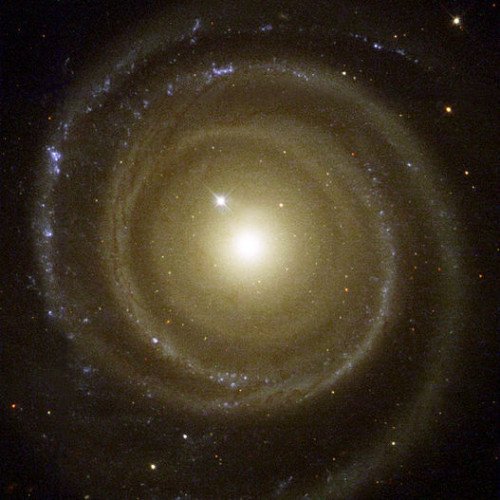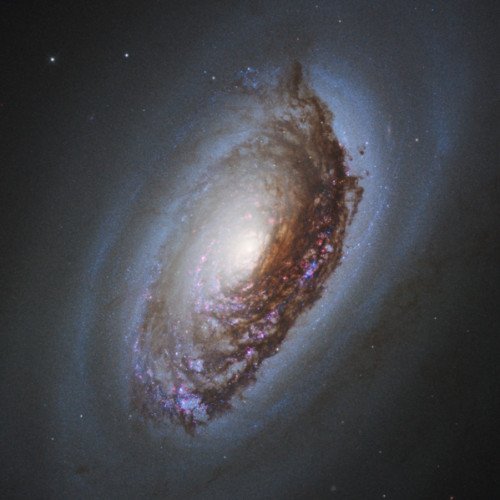"BACKWARD GALAXY" vs "BLACK EYE GALAXY"

BACKWARD GALAXY
NGC 4622 is a face-on unbarred spiral galaxy with a very prominent ring structure located in the constellation Centaurus. The galaxy is a member of the Centaurus Cluster. The spiral galaxy, NGC 4622 (also called Backward galaxy), lies approx. 111 million light years away from Earth in the constellation Centaurus. NGC 4622 is an example of a galaxy with leading spiral arms. In spiral galaxies, spiral arms were thought to trail; the tips of the spiral arms winding away from the center of the galaxy in the direction of the disks orbital rotation. In NGC 4622, however, the outer arms are leading spiral arms; the tips of the spiral arms point towards the direction of disk rotation. This may be the result of a gravitational interaction between NGC 4622 and another galaxy or the result of a merger between NGC 4622 and a smaller object. NGC 4622 also has a single inner trailing spiral arm. Although it was originally suspected that the inner spiral arm was a leading arm, the observations that established that the outer arms were leading also established that the inner arm was trailing. These results were met with skepticism in part because they contradicted conventional wisdom with one quote being “so you’re the backward astronomers who found the backward galaxy.” The fact that a pair of arms could lead was not easy to accept. Astronomical objections centered on the fact that dust reddening and cloud silhouettes were used to determine that the outer arms lead. The galaxy disk is tilted only 19 degrees from face-on making near to far-side effects of dust hard to discern and because clumpy dust clouds might be concentrated on one side of the disk, creating misleading results. In response, the “backward astronomers” determined. NGC 4622's spiral arm sense with a method independent of the previous work. The new Fourier component method is actually assisted by the small tilt, and dust reddening and cloud silhouettes are not used in the latest analysis. The Fourier component method reveals two new weak arms in the inner disk winding opposite the outer strong clockwise pair. Thus the galaxy must have a pair of arms winding in the opposite direction from most galaxies. Analysis of a color-age star formation angle sequence of the Fourier components establishes that the strong outer pair is the leading pair.
Statistics for this Xoptio

BLACK EYE GALAXY
The Black Eye Galaxy (also called Evil Eye Galaxy and designated Messier 64, M64, or NGC 4826) is a relatively isolated. spiral galaxy 17 million light-years away in the mildly northern constellation of Coma Berenices. It was discovered by Edward Pigott in March 1779, and independently by Johann Elert Bode in April of the same year, as well as by Charles Messier the next year. A dark band of absorbing dust partially in front of its bright nucleus gave rise to its nicknames of the "Black Eye" or "Evil Eye" galaxy. M64 is well known among amateur astronomers due to its form in small telescopes and visibility across inhabited latitudes. This galaxy is inclined 60° to the line-of-sight and has a position angle of 112°. At the distance of this galaxy, it has a linear scale of 65 ly (20 pc) per arcsecond. The morphological classification in the De Vaucouleurs system is (R)SA(rs)ab, where the '(R)' indicates an outer ring-like structure, 'SA' denotes a non-barred spiral, '(rs)' means a transitional inner ring/spiral structure, and 'ab' says the spiral arms are fairly tightly wound. Ann et al. (2015) gave it a class of SABa, suggesting a weakly barred spiral galaxy with tightly wound arms. M64 is a type 2 Seyfert galaxy with an HII/LINER nucleus. The central region is a weak source of radio emission. A soft X-ray source has been detected at the nucleus, which is most likely coming from the circumnuclear region rather than directly from an active galactic nucleus. There is an inner disk of molecular gas that is truncated at a radius of 2,300 ly (700 pc). At present, the non-rotational motions of this disk do not significantly feed the core, but the disk does produce a vigorous rate of star formation, with also approximately 100 billion stars inside the galaxy. There is also evidence of a recent large inflow of mass.